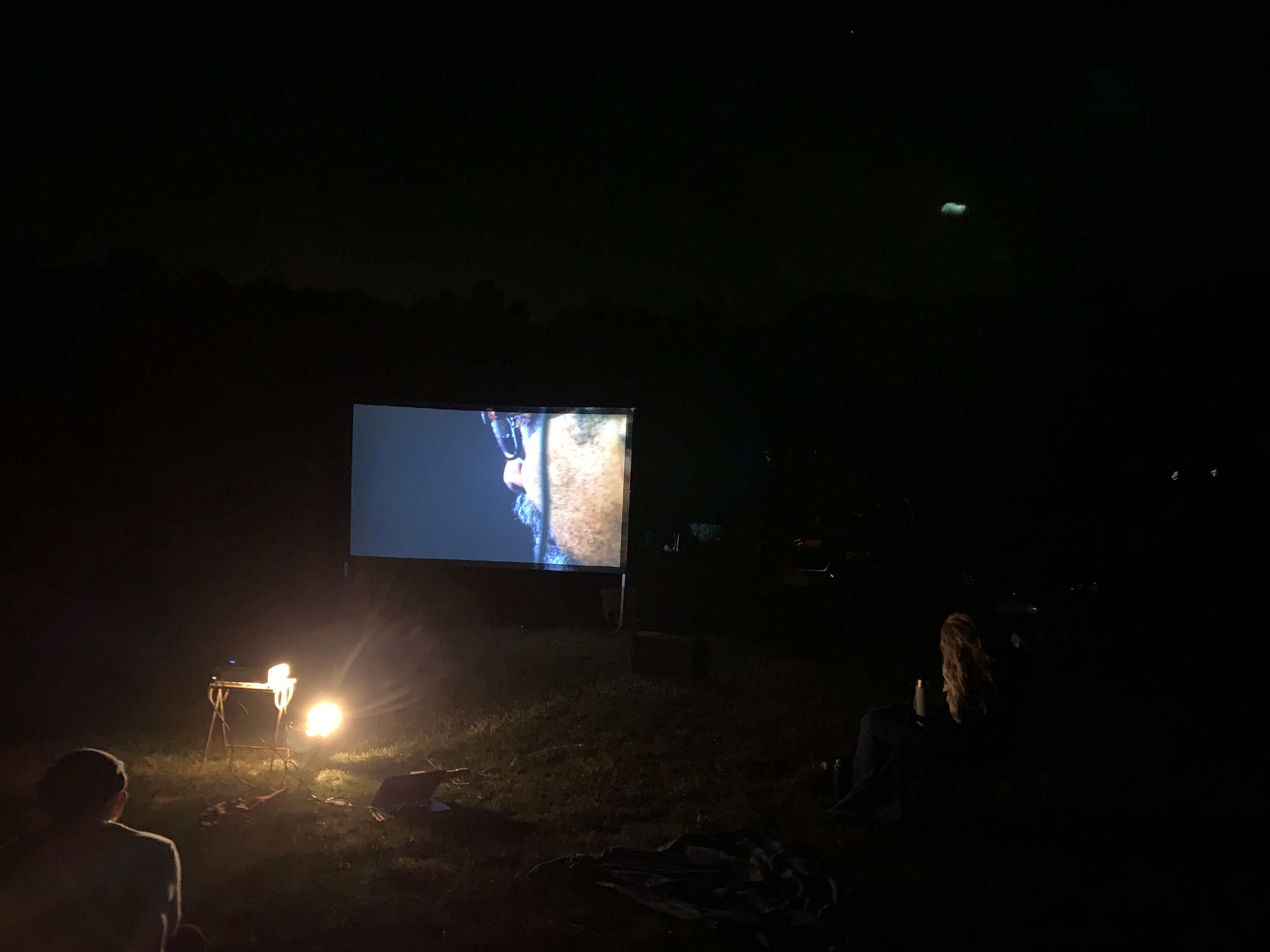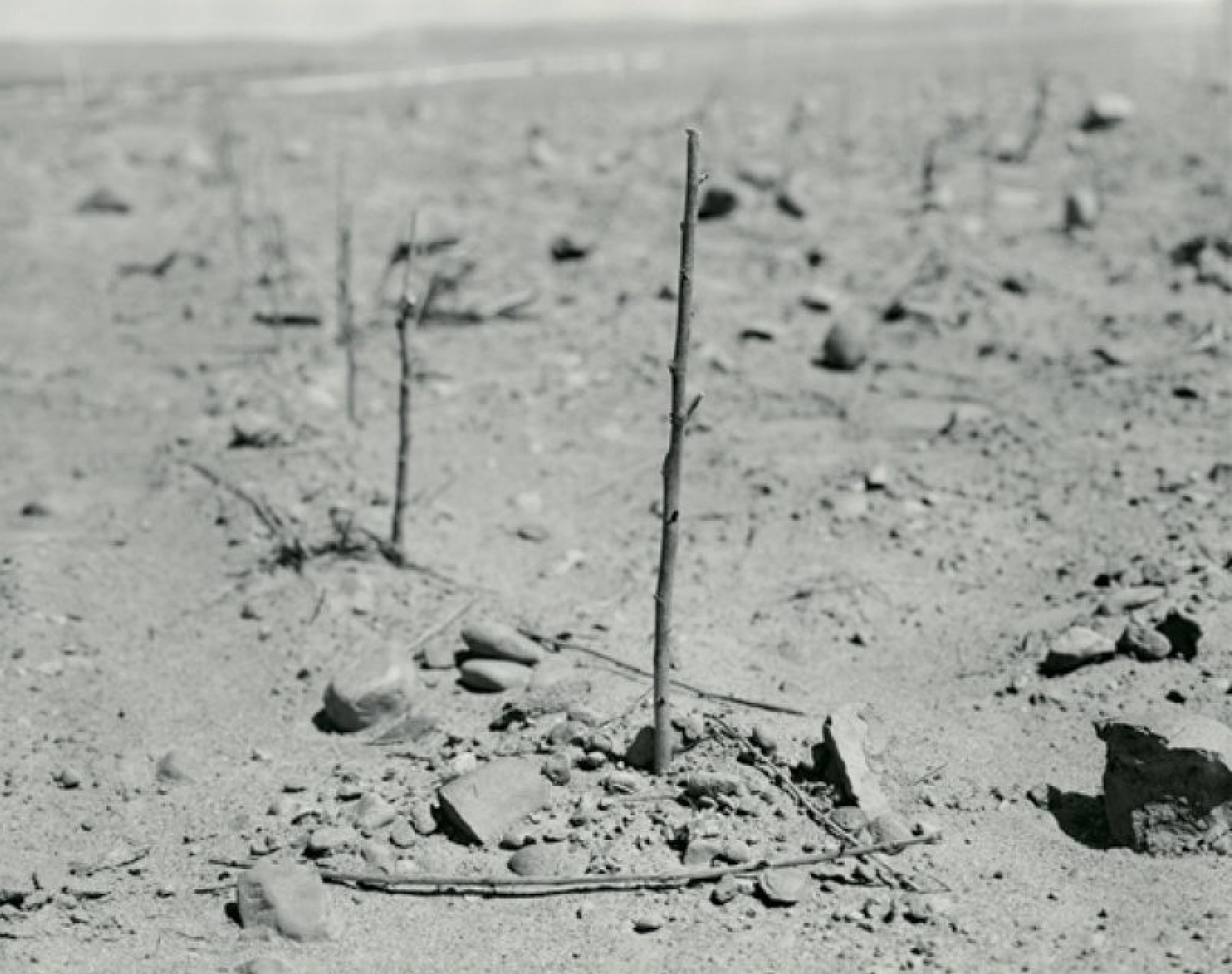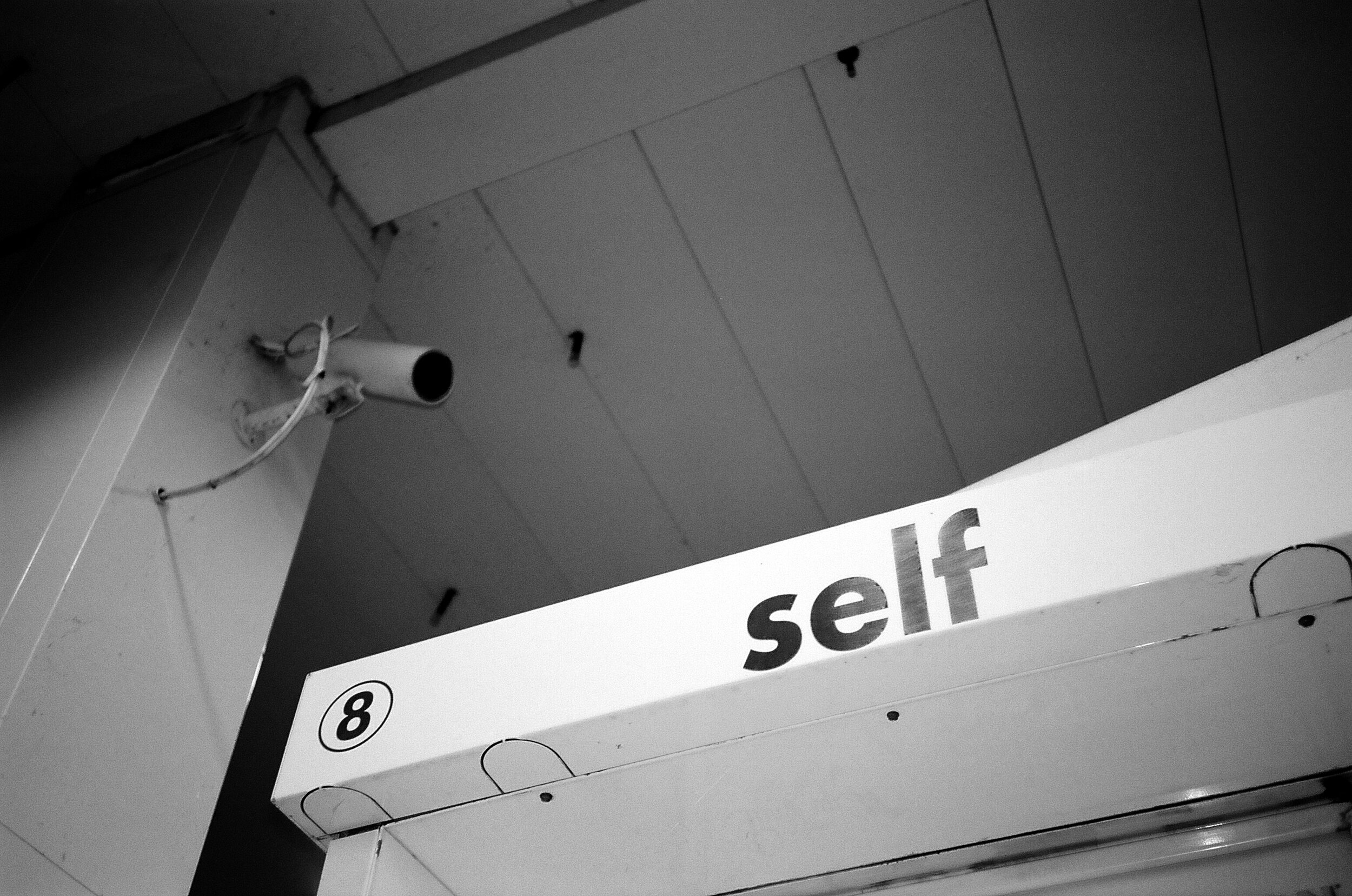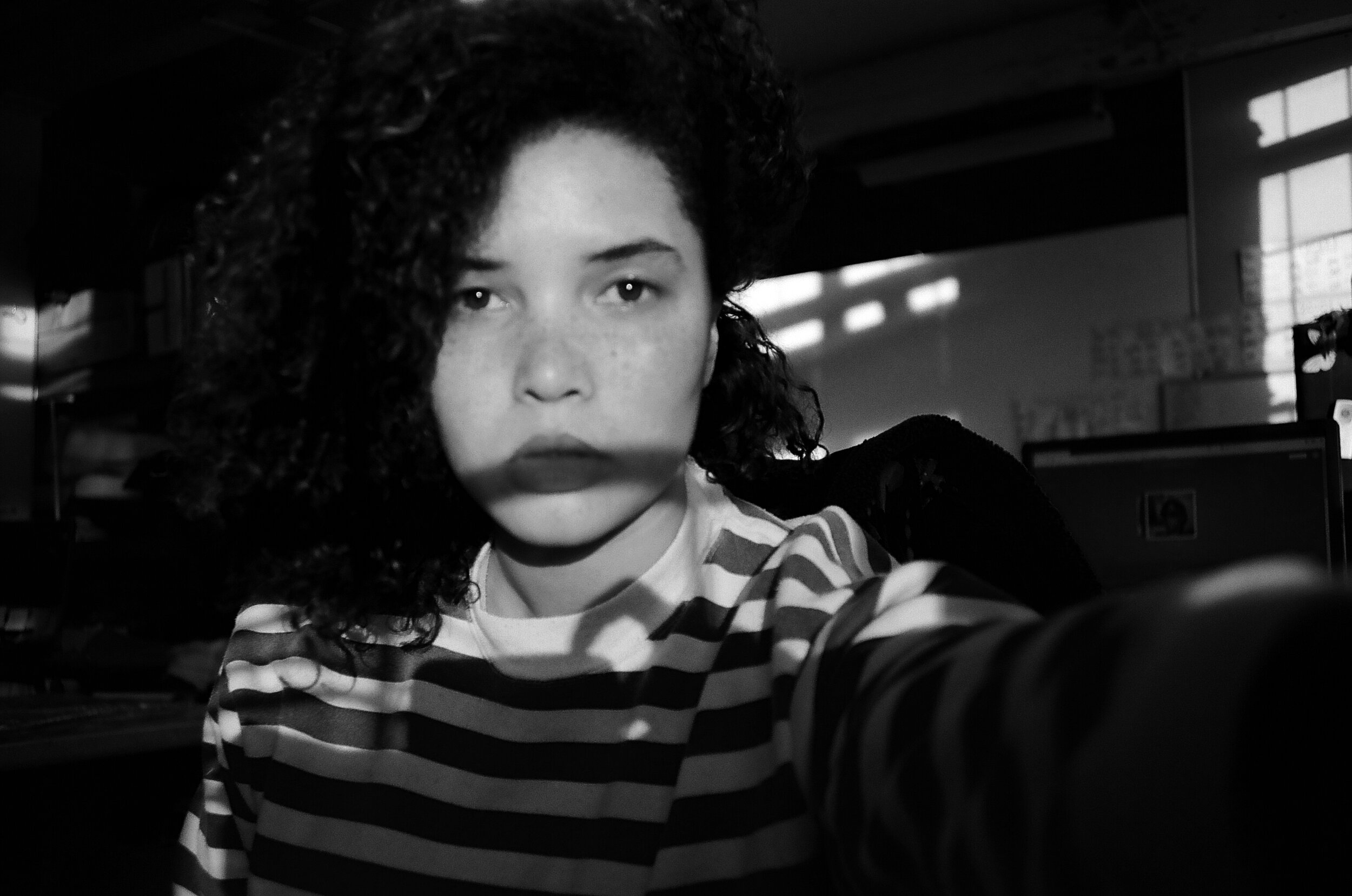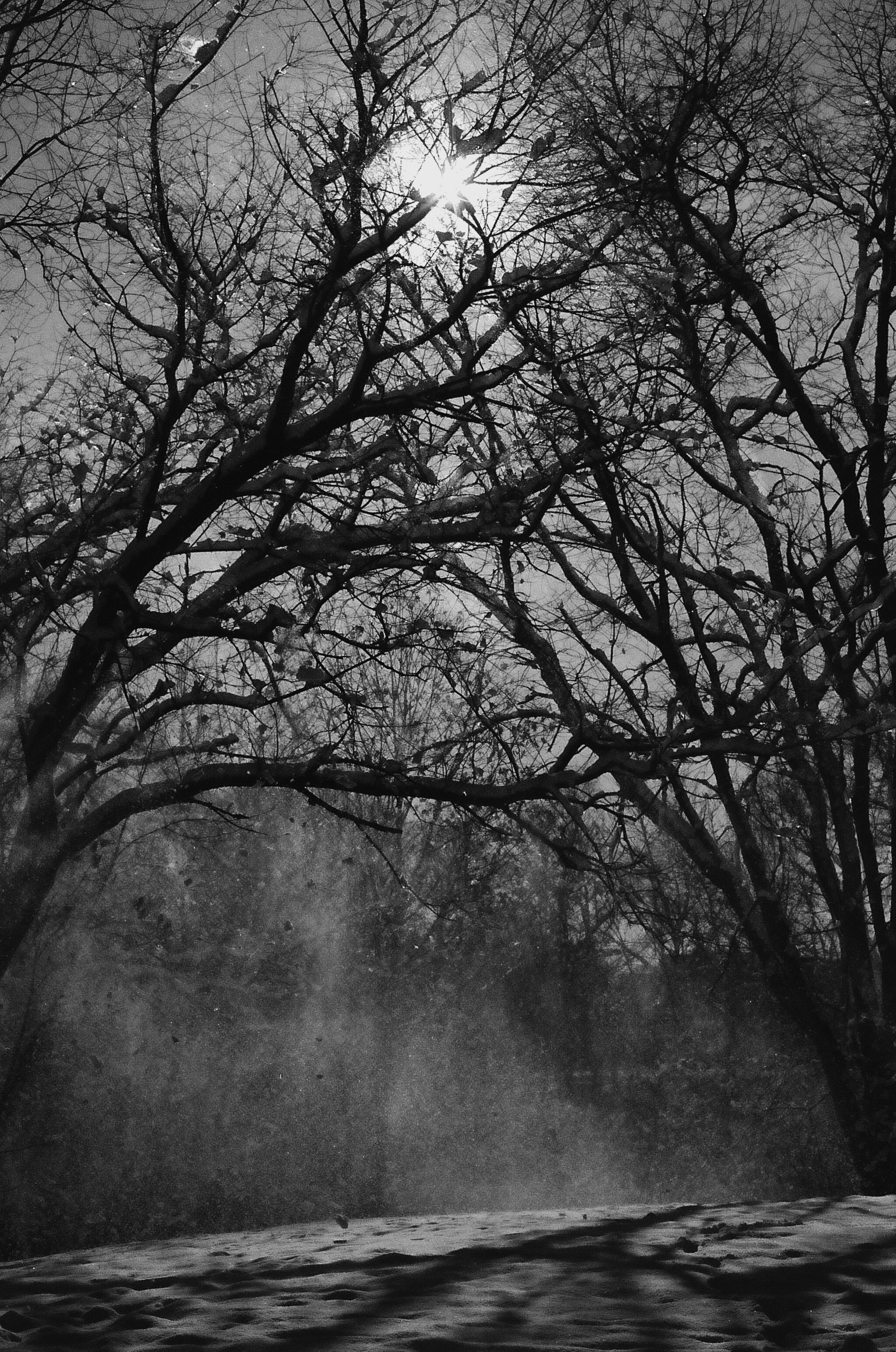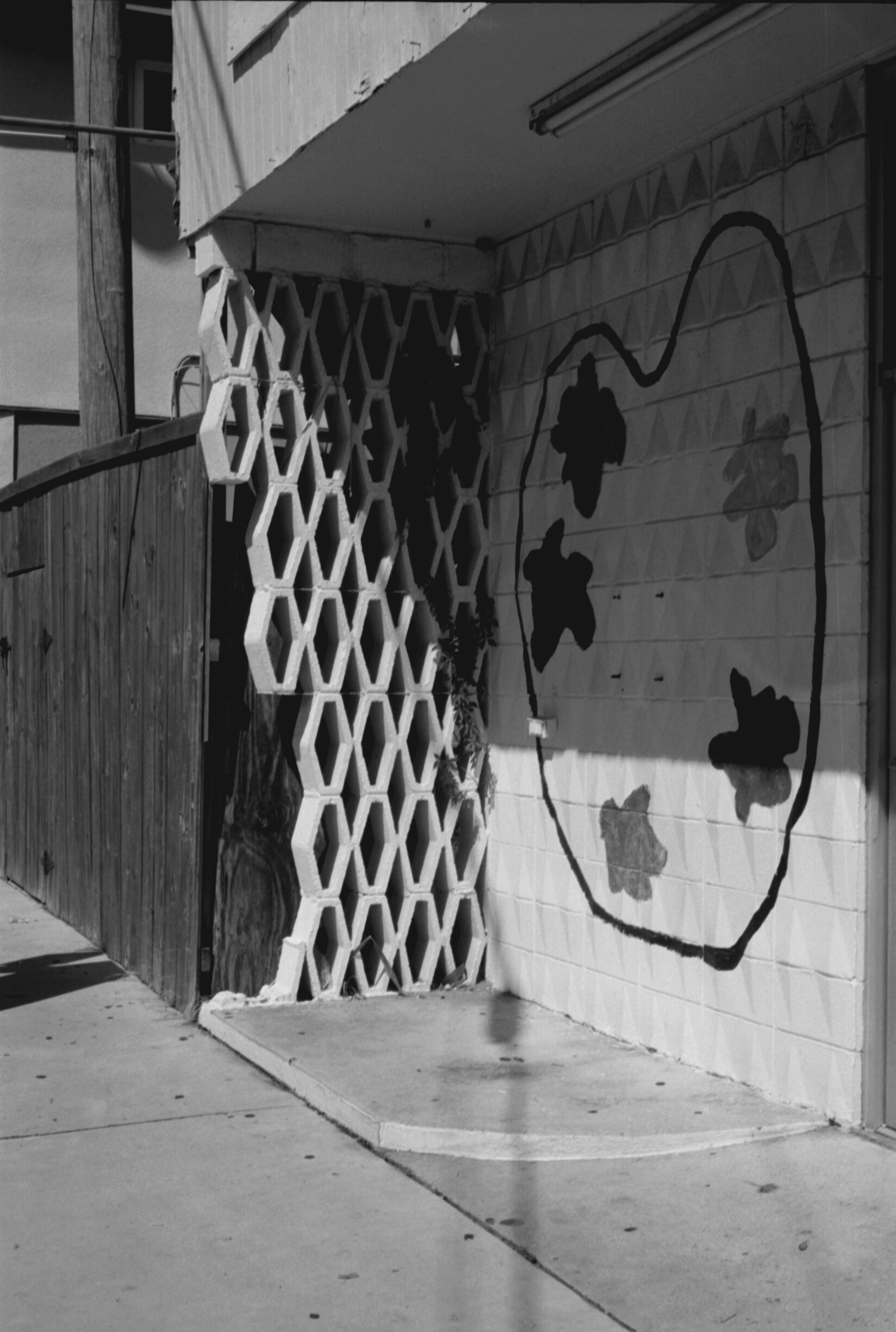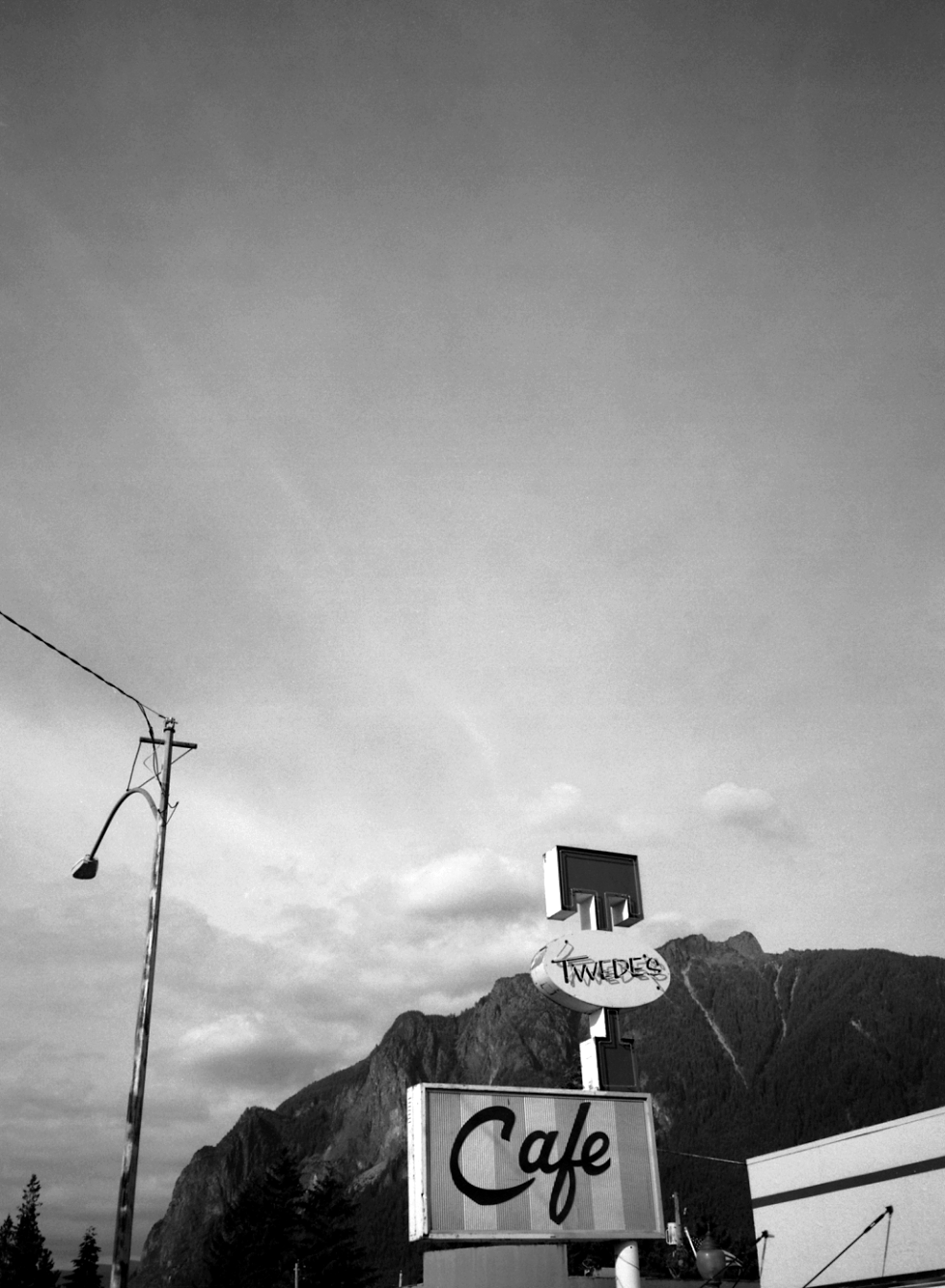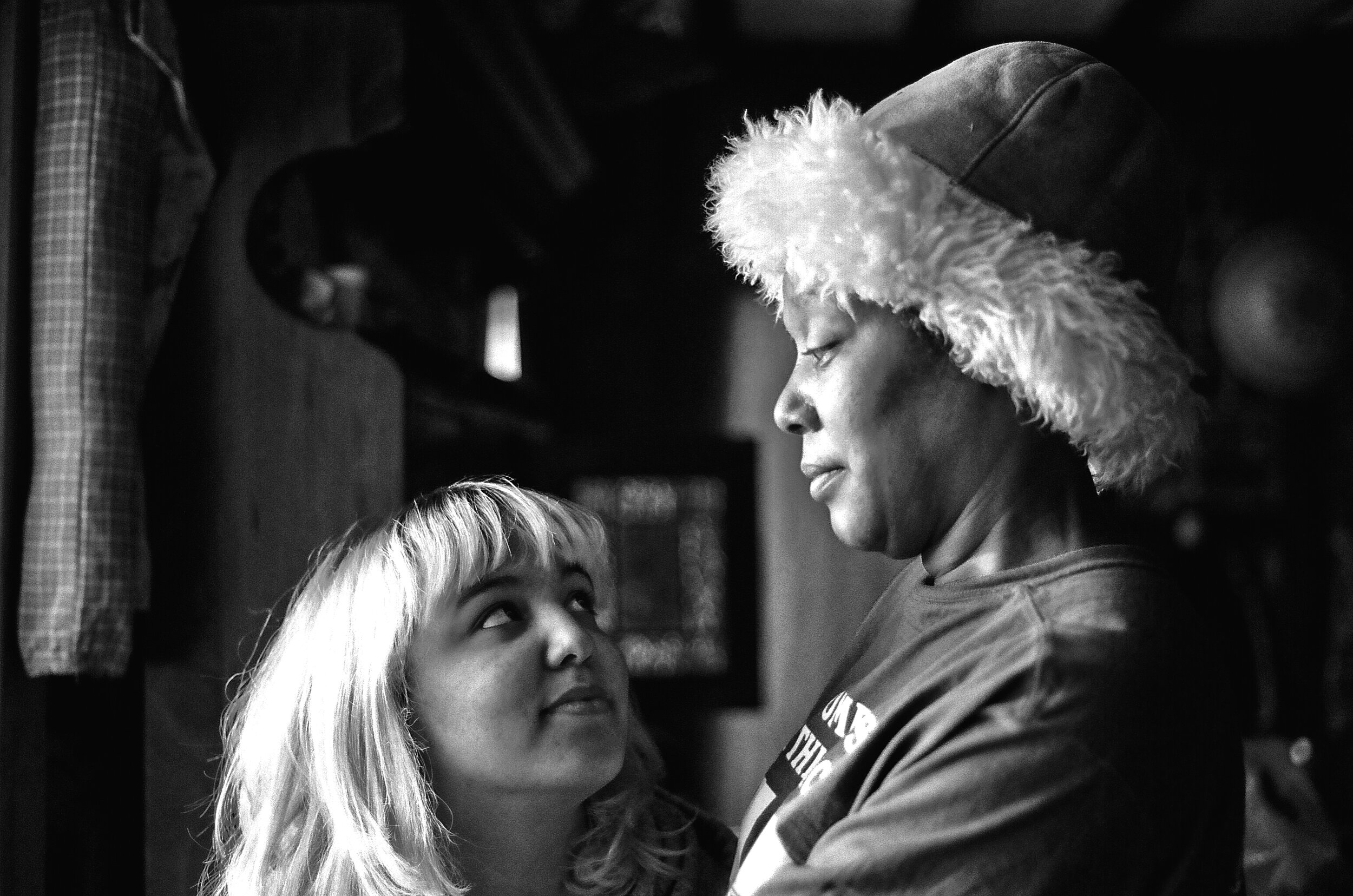afterhours
by Olana Flynn
afterhours is a multi-platform archive created over the course of six weeks in conjunction with “Please and thank you,” a group exhibition of works in black and white. The archive begins here and will be expanded through a series of live, mostly unattended events. Evolving information on how the archive continues to unfold is outlined at the end of this text.
8.15.20
I make lists all of the time as an alternative to taking rehearsal notes. They are often far more reliable in communicating the way my brain got organized in a particular moment to my future self.
Songs. Books. Movies. People. Tasks. Places.
Disconnected. Obtuse. Nonsensical.
Notebooks full of lists.
So, being asked to create some sort of mixed-media playlist, a practice so integral to my process, in a moment when there is no event to process toward, is, in a word, exciting. And overwhelming.
This is only a beginning.
When I was little, we lived in a loft on 27th and 6th in Chelsea. The floor was checkered black and white tile, the entire building was crooked, and you had to throw a key down in a sock when people came over. Many days a week my father would disappear into the bathroom. He’d roll up a towel to cover the crack at the bottom of the door, turn on the red lamps he had clamped to the pipes running up and down the walls, and lay a large piece of ply wood on top of the claw foot tub to use as a table for his tubs of developing chemicals. One of my very first memories is of peering over that plywood watching a stranger’s face come to life in shades of gray.
Before I ever made a dance, I made black and white photographs. Before I ever made a photograph, I wrote. Before I ever recorded sound or made video, I made dances.
At some point I started doing all those things at once and everything I’ve made since has been about the color gray.
Gray as in the simultaneous resonance of one material with another and the dissonance of that same material with another.
Gray as in the infinite range of possible shades between black and white.
Gray as in the color of your shadow against concrete.
Gray as in the area on a negative touched by only some light.
Gray as in gray matter.
Gray as in liminal, as in the interstices.
Gray as in it is impossible to write conceptual words around black and white in August 2020 without acknowledging the ways in which those words are associated with race and violence and maybe gray being the infinite between black and white means gray as in something transformatively, expansively radical to work from between that binary.
Gray as in the connections between that which appears to be oppositional or have no connection.
Artists are often asked to name our influences, our lineage.
Miroslav Tichý photographed using homemade cameras and his photographs are blurry, oddly cropped, and double exposed. The subjects of the photographs are usually people but the bodies are chopped up. There is a simultaneous honor and disregard for both the body and machine that I seriously fuck with.
And what about performers?
I’m pretty sure everything is some kind of performance and I need more information than that to answer that question but ok, I really love Iggy Pop.
Well then, what about the body or embodiment?
Labor. Religion. Rock and roll. Ritual. Sound. Shaking.
And dance?
If I must, here is one. He’s not here because my work is anything like his, but simply because it is one of the few dances that I remember exactly the moment I saw it for the first time: Franklin Patterson Hall, Hampshire College.
Do you remember where you were the first time you heard your favorite song? No but there are songs I am pretty sure I was born knowing.
I’ve always resisted that question about lineage. Because “lineage” feels generational in a way that doesn’t foster reciprocity. Because that question implies that those that came before you or those working in the same form always have the most to give you.
At some point I figured out my influences could and should also be the people working next to me and growing up with me. I owe that in large part to all of the years I have spent creating and hanging out in a scene where boundaries are allowed to crumble, sheltered in falling down haunted houses and unified in its best moments by a vague Western Mass specific code of DIY.
I learned there that the people, the disparate misfits, left at the end of the night when the gig is over sitting on a filthy carpet in a room shrouded in smoke listening and putting each other on to record after record were the ones with the most influence over my work.
afterhours is a list, a love letter, an archive for, of, and by them.
This is the end at the beginning - an inversion of how this usually goes. Usually there are lists on lists on lists that condense over time, without ever being seen, into the performance you get to watch. This time I am starting with this short collection of words and tip-of-the-iceberg gathering of materials. Between now and six weeks from now it will expand across platforms, between digital and live space, and might become messy and certainly impossible to witness in its entirety.
8.21.20
A bunch of years ago already, I started hearing about “the professor” – discussions and plans made between sets in show-house basements and over loud music. I never really inquired about who “the professor” was and shortly after that I moved away.
Then, in January 2018 Milford Graves Full Mantis came out.
For the next year I missed every screening as I crisscrossed the country by car, watching as this documentary by my friends gained traction.
When I finally did see it, in a small theater in LA, I was deep in the development of my MFA thesis in dance about gray space and liminality in relationship to sound and body. Watching Full Mantis nothing short of blew my mind. Graves’ meshing of discipline and commitment to following the circuitous paths between ideas are things I come back to over and over again.
One of the many things that I love about this documentary is that it isn’t really a documentary about Graves it just is him. In deciding to include it as part of afterhours it was important to me that I share it in a way that was both specific to my project and also captured some essence of Milford. In planning for this the screening I talked to Jake and asked him about shorts I might pair the film with.
Are there other things you and Neil have made together? Things you watched on repeat while making Full Mantis? Things Milford loves?
Meditation on Violence (1948)
Five Deadly Venoms (1978)
I have been watching movies outside all summer with the motley crew I have fallen into/have assembled for myself on the North Fork. Mostly the ridiculously iconic movies you can drink beer to that we’ve been watching most of our lives -- Wet Hot American Summer, Dazed and Confused -- mashed up with some of our communally-proclaimed “classics” -- The Big Lebowski, Chinatown, Natural Born Killers. I wanted to do something different for this – simply watching outside wasn’t good enough for the professor. Full Mantis opens on a quote from Graves: “Look at the room downstairs, look at the garden outside, don’t try to analyze it, just take it in.” From there, the entire film takes place in one of three places – in archival footage, inside Graves’ Queens home, and in his garden. So, we watched it projected in the fields at Treiber Farms, with the edges of the frame spilling off the screen onto the blackberry bushes behind it, bookended by tracks that at once have nothing and everything to do with Milford Graves.
Talking to a friend about him recently they said, “he’s just what we need these days.” Seeing Milford Graves Full Mantis for the first time felt like a gift and it feels like gift to be able to hold space for it now.
**Milford Graves Full Mantis is available to watch on Amazon Prime and to rent through a number of streaming platforms**
9.5.20
I started making this video at the bitter end of graduate school. I had spent a whole bunch of time that academic year driving past Palm Springs into Imperial County, returning over and over again to the Salton Sea. Specifically, to a tiny town called Bombay Beach, to take photographs.
My mom likes to say this thing, “you can’t choose your old friends.” Usually she says it when she or someone else is complaining about a person they’ve known forever. Last week I sat on the beach with a new friend and an old friend talking about old friendships. I looked at Lazar, who I’ve known since my sophomore year of high school and said, “I guess we got pretty lucky with our old friends, huh?”
In February Lazar asked me to show my Bombay Beach video as part of a screening he was organizing around a work by Charles Atlas, The Geometry of Thought, which he had scored. With Lazar serendipitously on the North Fork last weekend, I asked him to hang out in the gallery and collaborate with me on an unattended afterhours event.
I told him to bring whatever he wanted, and I loosely based my own initial contributions around the things Bombay Beach and The Geometry of Thought might or might not have in common…
Sound based in percussive loops and layers
My and Charlie’s connections to the post-modern dance world
My research looks at improvisational movement and technologies, including analogue photography and electronic music, for looping and layering in relation to liminality, memory, and gray area. I work with overlapping, reused, and duplicated materials and mediums in singular performance as well as over time and seemingly separate projects. Through extensive repetition – materials repeating themselves, replicating each other, and overlapping over and over again – each material breaths, repetitively taking from and contributing to the work.
What unfolded over the course of the two or so hours Lazar I spent in the gallery last Saturday night was a real-time example of this layering: Why Can’t We Live Together by Timmy Thomas and obscure ambient recordings by David Bowie playing both inside and outside the gallery, over footage of The Milford Graves Quartet, next to a small second projection of an original work by Lazar based on this loose theme of black and white – self-described as “some real first year of art-school stuff.”
Translator’s Note by Lorenzo Bueno, another of our oldest friends, into Skin Job by Jennifer Reeder. Another piece of work by Reeder, The Ex-Boyfriend and Other Impossible Pleasures. To a very short excerpt of Set and Reset, to a very short excerpt of Glacial Decoy, both by Trisha Brown. Auto-played into Ping Pong Duet by Robert Rauschenberg which led us to talking about the Theremin, it’s inventor Leon Theremin, and theremin virtuoso Clara Rockmore.
Lazar told me a few days earlier about the death of the father one of my high school classmates. I remembered, upon hearing this news, a photograph he had taken.
I looked at this photograph over and over again while I was living in the desert and working on my MFA thesis. I had somehow forgotten that the man who took this photograph was the father of someone I knew, that I had been in his home many years earlier. An example of the complex webs our influences create in our lives, the ways they weasel their way into our subconscious to emerge at a later time when we are ready for them.
**The Geometry of Thought by Charles Atlas is available to view by appointment and will be shown again during the VSOP Open House on Saturday September 26th and Sunday September 27th**
an ongoing list of music videos in black and white (at least partially or sort of)
part one with an accidental leaning towards 1988 and 1993
Q Lazzarus Goodbye Horses (1988)
A Tribe Called Quest Electric Relaxation (1993)
The Highwaymen Highwayman (1985)
Ciara Like A Boy (2007)
The Cranberries Zombie (1993)
Paula Abdul Straight Up (1988)
Wu-Tang Clan Protect Ya Neck (1993)
Joy Division Atmosphere (1988)
Kanye West Mercy (2012)
New Order Round and Round (1989)
Iggy Pop The Passenger (1977)
Tracy Chapman Baby Can I Hold You (1988)
part two with one for nostalgia, one I love to hate, one I will never be able to decide where it’s good or not
*NSYNC Gone (2001)
Litter Big Town Girl Crush (2014)
Cutting Crew (I Just) Died In Your Arms (1986)
part three with a selection from Jonathan
Snoop Dogg Drop It Like It’s Hot (2004)
Pearl Jam Oceans (1992)
Digable Planets Rebirth Of Slick (Cool Like Dat) (1993)
Jay Z feat Mary J Blige Can’t Knock The Hustle (1996)
Red Hot Chili Peppers Give It Away (1991)
Hozier Take Me To Church (2013)
C+C Music Factory Things That Make You Go Hmmmm… (1990)
Amy Winehouse Back to Black (2006)
9.19.20
I saw Dead Man (1995) by Jim Jarmusch for the first time a few years ago. It was the middle of the day in the middle of the winter and a friend told me that I would love it because the score was by Neil Young and Iggy Pop was in it.
They were right.
It is beautiful, slow, and funny. I love the way it oscillates in tone from somber to utterly absurd and back again. But the real reasons I love it are harder to put into words. They have bubbled up in my own work as Dead Man has become a ghost in the corner of rehearsal offering permission for dissonance and allowing things to last longer than feel appropriate.
Dead Man is the first thing I thought of when Jonathan asked me to create some sort of black and white, media-based project or playlist for VSOP. I wanted to watch it immediately but some impulse told me wait. And I am glad I did because it is a perfect movie to watch in this season between summer and fall, in a barn, with a fire to wander back and forth from.
Back in August when I was conceptualizing what afterhours was going to be, I had a long conversation with Neil Young – not the one who made the score for Dead Man but the other one – about the use of black and white in Milford Graves Full Mantis. Obviously, there is a lot of archival footage in black and white but he also called my attention to the use of black and white frames. Fades to black are common in films, fades to white not quite as much. In using both what emerges is the oppositional, the binarized, with every other image drifting back and forth on a spectrum between. Dead Man is entirely in black and white but watching it last night, in the Old Barn at Treiber Farms, I noticed a similar use of the black and white frame for the first time.
Crucial to the afterhours archive is making sure that no thing stands on its own; is putting everything in it in direct relation to something else. I asked my friend Matt to make mix tapes based on how the project unfolded, to offer some sort of reflection back to me about what I was doing. I thought about showing some videos before and after Dead Man but serendipitously Matt loves this movie as much as I do and once I heard what he made that was all we needed.
Dead Man is visually stunning but standing around a fire, with these sounds coming to meet us through the barn doors as we waited for everyone to arrive and settle in reminded me that it is also a film that requires and perhaps is, at its core, about deep listening.
9.25.20
Sometimes, when I rent a studio, I walk out after my time is up having not broken a sweat or even changing out of my street clothes into dance clothes. One part of my dancer self, the one that will always have a hard time shedding prescribed ideas of what “work” and “training” are, feels embarrassed as the next renter looks at me. I assume they are wondering why I paid to sit on the floor and waste my time.
But I didn’t waste my time.
I sat and caught up on the list of songs and essays and videos that have been on my lists:
to listen…
to read…
to watch…
And I took notes, some in my notebook and some in my body. Notes, to mine later. Notes, that at some point, maybe tomorrow when I am back in the studio, or maybe in a few years, will make their way into work.
Last night in the gallery I watched about three hours of experimental black and white films. Some old, some new. Some by my friends, some by others. Some suggested to me and some I found on my own. Some made just for me to watch and share as part of this afterhours project.
Some folks came and watched with me for some amount of time, some in the gallery and some through the window, but for the entire three hours as I watched I wrote.
Notes for the process in the future…
Magic Sun (1966) Phill Niblock | Ashfield Lake (2020)Dan Greenwood | Zach Hart + Alexandra Wilson (2018) | Zach Hart (2020) | Meshes of the Afternoon (1943) Maya Deren | Dan Cashman (2020) | The Image (1969) Michael Armstrong | Christine Sciulli (2020) | Unknown Woman of the Mill Town (2020) Clean Stains | I watch you watch me, (I watch you want me) (2020) Lily Sarosi | Josie Bettman (2020) | At Land (1944) Maya Deren | All Bowie Mix by Matt Krefting
9.27.20
When I first started describing this afterhours project I kept saying, “I want the events to feel the way it feels to sit around listening to records.” Digital playlists and mixes have made their way into my process many times over — included in performance ephemera/programs and as another way for Madison and I to communicate from a distance.
But in my practice sound is physical, material, created from the body and manipulated through mostly analogue systems.
I thought maybe I would try my hand at making mixes from my respectable but tiny record collection until I remembered I knew somebody who was already doing this and doing it much better than I ever would. I asked my friend Matt if I could include a link to some of the vinyl-to-tape-to-digital mixes he had been making and posting during quarantine. He said yes and also offered to make some specifically for and related to the project. Cool shit to listen to at the afterhours events made based on what was being shown or what loose theme I was basing a night around. Cool shit to listen to but also a reflective offering from someone else on my process.
Milford Graves + Five Deadly Venoms
layers + loops + contemporary dance
Dead Man
Experimental Black and White Films including Meshes of the Afternoon and a remarkable similar film that happens to be the first movie David Bowie was in.
binaries + feedback
afterhours
In some ways I think that these six mixes sum up this project more holistically than anything I would say but here are some words anyway…
an archive*
an artist statement
a love letter
a presentation in excess
a rehearsal note
a collection
a journal
a blog
an inventory
a list
*the word archive is in original description of afterhours and from the beginning I have felt resistant to it. It is a very popular word in dance and performance studies — fields that my MFA in Experimental Choreography are deeply entwined with. Though I know that the word archive applies to this project, personally it feels impossible for me to separate this word from the theoretical frameworks of body as archivist and body as archive right now which makes me resist it in relationship to afterhours. But this word is not just popular in dance and performance studies it is popular in academia and the institutionalized art world in general.
Julietta Singh writes in her book No Archive Will Restore You: ”But ‘archive’ has more expansive meaning too…[it] simply means what you are studying, and calling what you study an ‘archive’ gives it heft, grants it the status on an intellectual pursuit. Your archive is an expected declaration — a pronouncement that makes manifest your worth and belonging in the great halls of higher learning. The archive, it must be noted, is also your enabling fiction: it is the thing you say you are doing well before you are actually doing it, and well before you understand what the stakes are of gathering and interpreting it.”
In this way archive is a gatekeeping word — one of the passwords that lets you move inside of a myriad of institutions (the academy, the museum, etc.) and along with those institutions come all of the problematic ‘isms (classism, racism, ableism, …ism, …ism, …ism) inherent to a long long history of gatekeeping. And because I hate the way these institutions are gate kept and upheld, I am resistant to using the word that might allow me access to them. Not that I do not what access to them, I just would like the rules to change. Can a list not manifest worth and belonging instead?
9.30.20
a final offering of black and white photographs…
Logistically afterhours will go like this…
Friday August 21st @ Treiber Farms
Outdoor Film Screening of Milford Graves Full Mantis
Email info@vsopprojects.com to RSVP
Friday September 18 @ Treiber Farms
Outdoor Film Screening of Dead Man
Email info@vsopprojects.com to RSVP
Saturday September 26th & Sunday September 27th
Open House at VSOP Projects, 11am-6pm
Between August 21st and September 26th there will be an undetermined number of unscheduled, primarily unattended “live archiving” events and screenings after hours at VSOP Projects. Each of these events will have a map, created ahead of time by me (and maybe some invited guests).
Follow @vsopprojects on Instagram to follow along.
Much of what is viewed live will become available here in this digital space. Some, at the artist’s request, will not but may be viewed by appointment and/or re-shared at the Open House on September 26th and 27th.


















